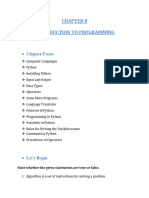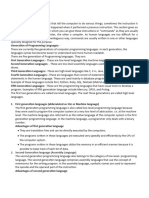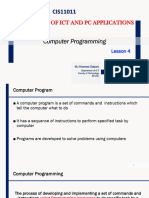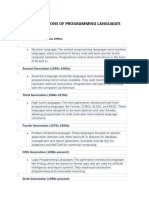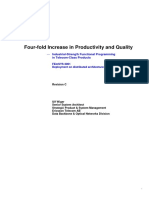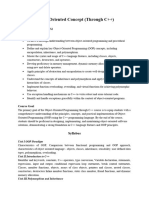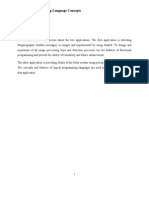0% found this document useful (0 votes)
20 views3 pagesNotes On Computer Languages
The document provides an overview of computer languages, categorizing them into five generations from machine language to fifth-generation languages used for AI. It explains key programming concepts such as syntax vs. semantics, compilers vs. interpreters, and various programming paradigms including procedural, object-oriented, and functional programming. Additionally, it highlights popular programming languages like Python, Java, and C/C++, along with their key features and common uses.
Uploaded by
online schoolCopyright
© © All Rights Reserved
We take content rights seriously. If you suspect this is your content, claim it here.
Available Formats
Download as DOCX, PDF, TXT or read online on Scribd
0% found this document useful (0 votes)
20 views3 pagesNotes On Computer Languages
The document provides an overview of computer languages, categorizing them into five generations from machine language to fifth-generation languages used for AI. It explains key programming concepts such as syntax vs. semantics, compilers vs. interpreters, and various programming paradigms including procedural, object-oriented, and functional programming. Additionally, it highlights popular programming languages like Python, Java, and C/C++, along with their key features and common uses.
Uploaded by
online schoolCopyright
© © All Rights Reserved
We take content rights seriously. If you suspect this is your content, claim it here.
Available Formats
Download as DOCX, PDF, TXT or read online on Scribd
/ 3




